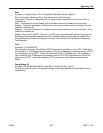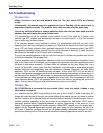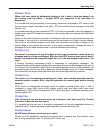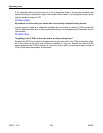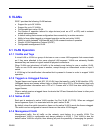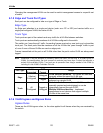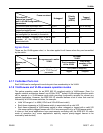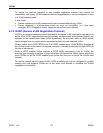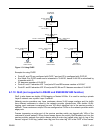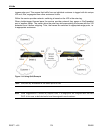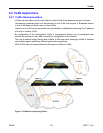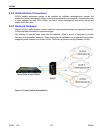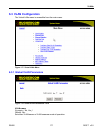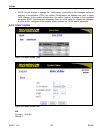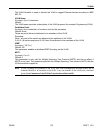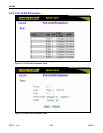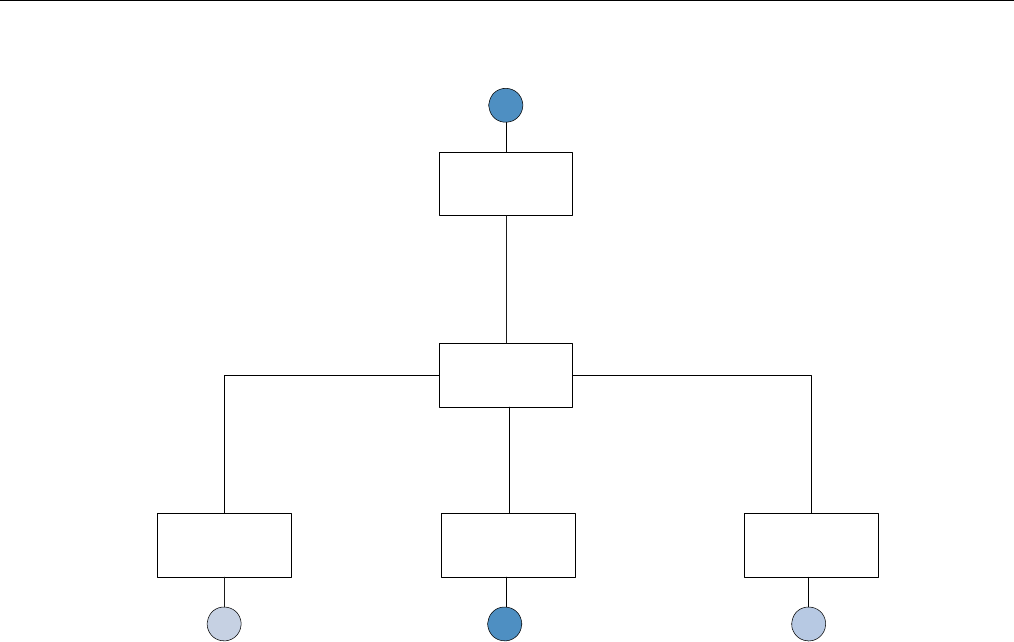
VLANs
RS400 173 ROS™ v3.5
End Node C
GVRP Unaware
End Node E
GVRP Unaware
PVID - 7
Port A1 –GVRP aware
Adv. only
Port A2– Edge Port
Core Switch
B
Edge Switch
A
Port B1 – GVRP aware
Adv. & Learn
Port B2 – GVRP aware
Adv. & Learn
Port C1 – GVRP aware
Adv. only
Edge Switch
D
Port E1 – GVRP aware
Adv. Only
Port B3 – GVRP aware
Adv. & Learn
Port D1 – GVRP aware
Adv. & Learn
Edge Switch
E
Edge Switch
C
Port B4 – GVRP aware
Adv. & Learn
End Node A
GVRP unaware
End Node D
GVRP aware
Port D2– GVRP aware
Adv. & Learn
Port C2– Edge PortPort E2– Edge Port PVID - 20
PVID - 7
Figure 113: Using GVRP
Example for using GVRP:
• Ports A2, and C2 are configured with PVID 7 and port E2 is configured with PVID 20
• End Node D is GVRP aware and is interested in VLAN 20, hence VLAN 20 is advertised by
it towards switch D
• D2 becomes member of VLAN 20
• Ports A1 and C1 advertise VID 7 and ports B1 and B2 become member of VLAN 7
• Ports D1 and B1 advertise VID 20 and ports B3, B4 and D1 become member of VLAN 20
6.1.10 QinQ (not supported in RS400 and RS8000/RS1600 families)
QinQ is also known as double VLAN-tagging or Nested VLANs. It is used to overlay a private
Layer 2 network over a public Layer 2 network.
Network service providers may have customers whose VLAN range overlaps and the traffic
from different customers is mixed in the network provider infrastructure. With double VLAN-
tagging, each customer is assigned his own VID which identifies him in the service provider’s
network. Those customers unique VIDs are configured as PVIDs on the network provider switch
edge ports.
Frames ingressing an edge port of the service provider switch are tagged with VIDs of the
customer’s private network. When those frames egress the switch QinQ-enabled port into the
service provider network the switch always adds an extra tag (called outer tag) on top of the
frames’ original VLAN tag (called inner tag) and the outer tag VID is the PVID of the frames’



